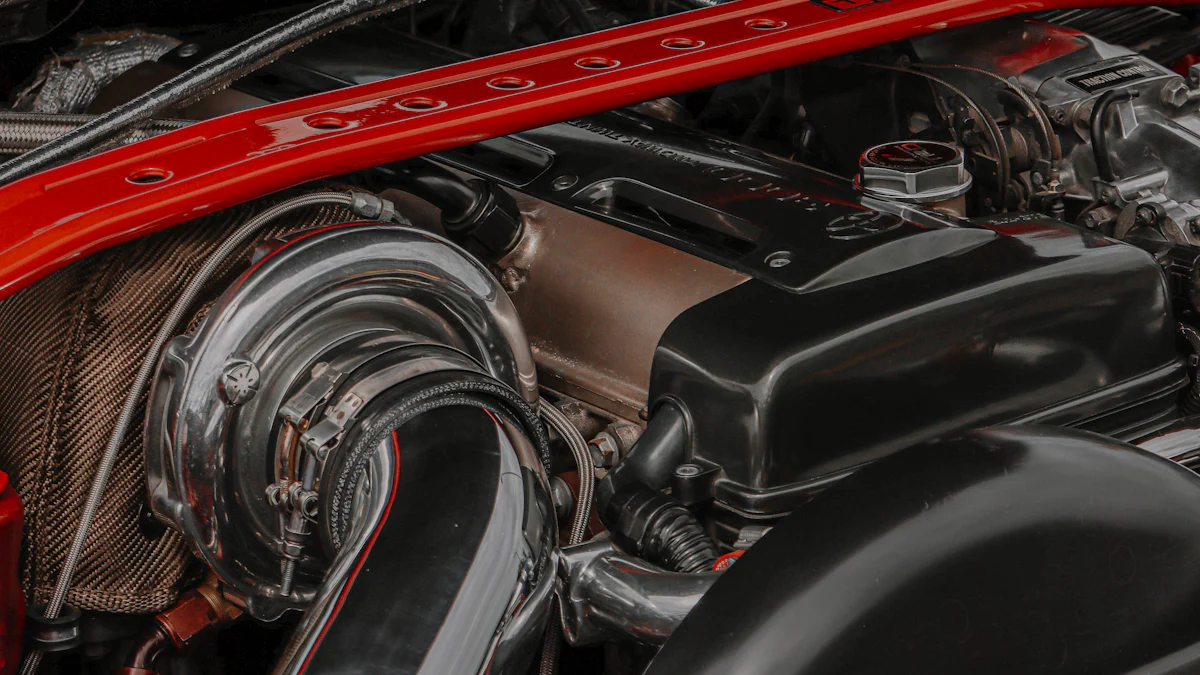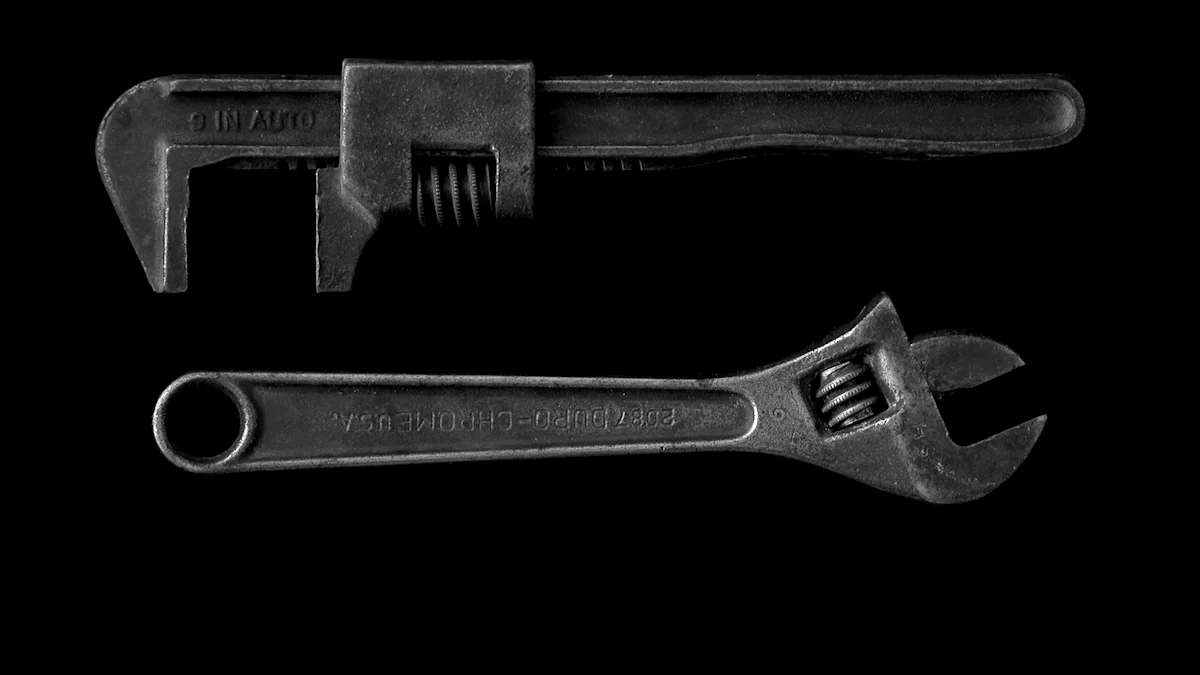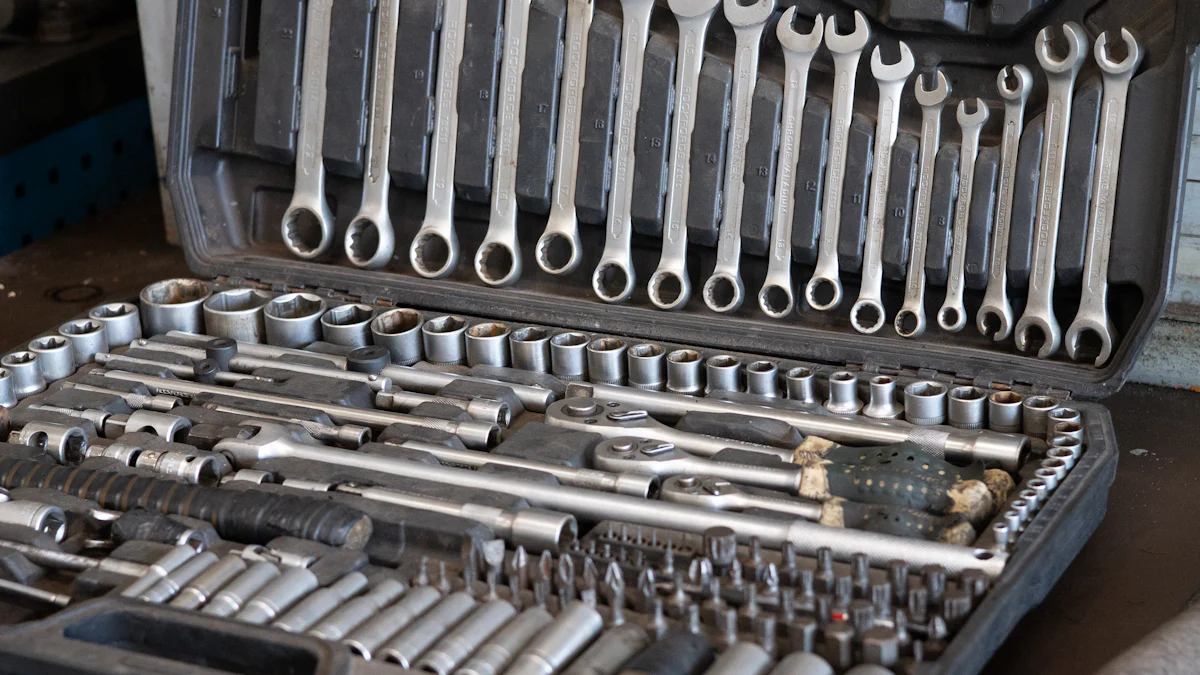
Using the right filter wrench ensures efficient and damage-free oil filter removal. Various types of oil filter wrenches exist, each designed for specific needs. This blog aims to compare different types of oil filter wrenches to help readers make informed choices.
Strap Wrenches

Overview of Strap Wrenches
Design and Mechanism
Strap wrenches feature a simple yet effective design. A flexible strap, often made from materials like nylon or rubber, wraps around the oil filter. The handle, usually crafted from durable materials such as aluminum alloy, provides leverage. When the handle is turned, the strap tightens around the filter, allowing for easy removal.
Common Uses
Strap wrenches excel in various applications. Mechanics and DIY enthusiasts use them to remove oil filters in cars, motorcycles, and other machinery. The adjustable nature of the strap allows it to fit filters of different sizes, making it a versatile tool in any garage.
Advantages of Strap Wrenches
Versatility
Strap wrenches offer unmatched versatility. The adjustable strap can fit a wide range of filter sizes. This flexibility makes it a go-to tool for many automotive tasks. Users appreciate the ability to use one filter wrench for multiple vehicles and machinery.
Ease of Use
Strap wrenches are user-friendly. The lightweight design and comfortable grip make handling easy. Even those new to car maintenance find these tools straightforward. The LIBRATON Strap Wrench, for example, features a double-layered nylon strap and an aluminum alloy handle, ensuring both comfort and durability.
Disadvantages of Strap Wrenches
Limited Grip on Tight Filters
Strap wrenches may struggle with extremely tight filters. The flexible strap might not provide enough grip to loosen a filter that has been overtightened. In such cases, users might need a more rigid filter wrench.
Potential for Slippage
Strap wrenches can slip, especially on smooth or oily surfaces. The potential for slippage increases the risk of injury or damage to the filter. Users must ensure the strap is clean and dry before attempting to remove a filter.
Socket Wrenches
Overview of Socket Wrenches
Design and Mechanism
Socket wrenches feature a robust design. These tools consist of a metal socket that fits over the end of an oil filter. The socket connects to a ratchet handle, providing leverage for turning. The GreatNeck 25401 Filter Wrench highlights a common issue with some designs: the shallow square hole on top for the socket wrench. Users cannot insert the socket wrench all the way in, which may push the tool out during use.
Common Uses
Socket wrenches excel in removing cartridge filters from contemporary cars. Mechanics and DIY enthusiasts use these tools for precise and secure filter removal. Specialized cartridge filter wrenches often have deep sockets or cap designs. These features allow the wrench to reach and securely grasp recessed filter housings.
Advantages of Socket Wrenches
Strong Grip
Socket wrenches provide a strong grip on oil filters. The metal socket fits snugly over the filter, reducing the risk of slippage. The LIBRATON Wrench includes a no-skid pattern design on the handle, increasing the force area and ensuring a tight bite. This design effectively prevents slipping and ensures large torque.
Compatibility with Ratchets
Socket wrenches work well with ratchets. The socket attaches to the ratchet handle, allowing for easy turning. This compatibility makes the tool versatile and efficient. Users can apply significant torque without much effort, making the removal process smoother.
Disadvantages of Socket Wrenches
Size Limitations
Socket wrenches face size limitations. Each socket fits a specific filter size. Users need multiple sockets to cover different filter sizes. This requirement can be inconvenient and costly. Universal socket wrenches offer a solution by adapting to various filter diameters, but these are not always perfect for every situation.
Need for Additional Tools
Socket wrenches require additional tools. Users need a compatible ratchet handle to operate the socket. This dependency adds complexity to the toolset. For example, the AUPREX Wrench works well in tight situations but requires a separate ratchet for operation. This need for extra tools can be a drawback for those seeking simplicity.
Pliers Wrenches
Overview of Pliers Wrenches
Design and Mechanism
Pliers wrenches feature a unique design. These tools resemble traditional pliers but have specially shaped jaws. The jaws mesh easily to provide a strong grip on the oil filter. The handles, often made from durable materials like steel, offer leverage for turning. The WORKPRO 2-piece Adjustable Pliers Wrench Set showcases this design with slip joint pliers that adjust to different sizes.
Common Uses
Pliers wrenches excel in various automotive tasks. Mechanics and DIY enthusiasts use these tools to remove oil filters in cars and motorcycles. The adjustable nature of the jaws allows the wrench to fit filters of different sizes. This versatility makes pliers wrenches a valuable addition to any toolset.
Advantages of Pliers Wrenches
Strong Grip
Pliers wrenches provide a strong grip on oil filters. The meshing jaws ensure a secure hold, reducing the risk of slippage. The LIBRATON Adjustable Plumbing Wrench highlights this feature with its robust design. Users appreciate the firm grip, which makes the removal process easier.
Adjustable Size
Pliers wrenches offer an adjustable size. The slip joint mechanism allows the jaws to open wider or narrower, fitting various filter sizes. This adaptability makes the tool suitable for multiple applications. Users find the WORKPRO 2-piece Adjustable Pliers Wrench Set time-saving and efficient due to this feature.
Disadvantages of Pliers Wrenches
Potential for Damage
Pliers wrenches can potentially damage oil filters. The strong grip may crush or deform the filter if not used carefully. Users must apply the right amount of pressure to avoid damaging the filter. Some customers report mixed opinions about the grip quality of the LIBRATON Adjustable Plumbing Wrench, indicating a need for careful handling.
Requires Strength
Pliers wrenches require physical strength to operate. The user must apply significant force to turn the wrench, especially on tight filters. This requirement can be challenging for those with limited hand strength. The need for strength may limit the tool’s usability for some individuals.
Cap Wrenches

Overview of Cap Wrenches
Design and Mechanism
Cap wrenches feature a unique design tailored for specific oil filters. These tools consist of a metal cap that fits over the end of an oil filter. The cap has flutes or ridges that match those on the filter, ensuring a secure grip. Users attach the cap wrench to a ratchet handle, providing the necessary leverage for turning. The STEELMAN 06123 Oil Filter Cap Wrench exemplifies this design, made from durable chrome vanadium steel to withstand repeated use.
Common Uses
Cap wrenches excel in removing hard-to-reach oil filters. Mechanics and DIY enthusiasts use these tools for various automotive tasks. The precision-stamped, deep-reach design of OEMTOOLS Cap Filter Wrenches ensures a tight fit, making them ideal for removing original filters and filter housings. These wrenches fit multiple sizes and flute designs, accommodating brands like AC/Delco, STP, and NAPA.
Advantages of Cap Wrenches
Secure Fit
Cap wrenches provide a secure fit on oil filters. The fluted design grips the filter tightly, reducing the risk of slippage. The STEELMAN 06139 Oil Filter Cap Wrench works with any standard 3/8-inch drive ratchet, ensuring quick and easy removal of screw-in filters. This secure fit makes the tool reliable for various applications.
Easy to Use
Cap wrenches are user-friendly. The simple design allows for straightforward operation. Users appreciate the ease of use, especially in confined spaces where other wrenches struggle. The Oil Filter Cap Wrench is particularly effective for lawnmower filters, offering a practical solution for small engines. The tool’s simplicity and efficiency make it a valuable addition to any toolkit.
Disadvantages of Cap Wrenches
Size Specific
Cap wrenches face size limitations. Each wrench fits a specific filter size and flute design. Users need multiple wrenches to cover different filter sizes, which can be inconvenient. The HIGH-QUALITY MATERIAL Wrench highlights this issue, as users must select the correct size for their specific filter. This requirement can add complexity to the toolset.
Limited Versatility
Cap wrenches offer limited versatility. The design restricts their use to specific filter types and sizes. Unlike adjustable wrenches, cap wrenches cannot adapt to various applications. This limitation reduces their overall utility in diverse automotive tasks. Users seeking a more versatile filter wrench might prefer other options like strap or pliers wrenches.
Chain Wrenches
Overview of Chain Wrenches
Design and Mechanism
Chain wrenches feature a robust design. These tools consist of a metal chain that wraps around the oil filter. The chain connects to a handle, providing leverage for turning. The AUPREX 24 Inch Chain Wrench showcases this design with concave teeth and three joints. This structure ensures a firm grip on the filter, allowing for easy removal or installation.
Common Uses
Chain wrenches excel in various automotive and mechanical tasks. Mechanics and DIY enthusiasts use these tools to remove stubborn oil filters. The chain structure allows access to confined areas where ordinary wrenches cannot reach. This versatility makes chain wrenches valuable for car repairs and pipe fitting.
Advantages of Chain Wrenches
Strong Grip
Chain wrenches provide a strong grip on oil filters. The chain wraps tightly around the filter, reducing the risk of slippage. The AUPREX 24 Inch Chain Wrench highlights this feature with its concave teeth design. Users appreciate the secure hold, which makes the removal process easier.
Adjustable Size
Chain wrenches offer an adjustable size. The chain can wrap around filters of various diameters, fitting different sizes. This adaptability makes the tool suitable for multiple applications. Users find the chain wrenches efficient due to this feature.
Disadvantages of Chain Wrenches
Potential for Damage
Chain wrenches can potentially damage oil filters. The strong grip may crush or deform the filter if not used carefully. Users must apply the right amount of pressure to avoid damaging the filter. Some customers report mixed opinions about the grip quality of chain wrenches, indicating a need for careful handling.
Requires Strength
Chain wrenches require physical strength to operate. The user must apply significant force to turn the wrench, especially on tight filters. This requirement can be challenging for those with limited hand strength. The need for strength may limit the tool’s usability for some individuals.
Different types of oil filter wrenches offer unique benefits and drawbacks. Choosing the right wrench ensures efficient and damage-free filter removal.
- Strap wrenches provide versatility and ease of use.
- Socket wrenches offer a strong grip and compatibility with ratchets.
- Pliers wrenches deliver adjustable size and a firm hold.
- Cap wrenches ensure a secure fit and user-friendly operation.
- Chain wrenches excel in strength and adaptability.
Selecting the appropriate tool for the task enhances the maintenance experience. Make an informed decision to achieve optimal results.
See Also
Discovering the Range of Socks for Males and Females
Essential Manual for Warm Winter with Soft Cozy Socks
